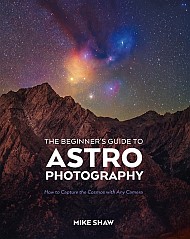Astronomy
My go-to pair of budget binoculars are now even cheaper this Prime Day
The perfect binoculars for casual stargazing are now under $100 for Amazon Prime Day
Private Ax-4 astronauts aboard ISS are filling their time with science, views of Earth and pierogis (video)
‘Science Fair’ of Lost Research Protests Trump Cuts
A protest at a congressional office building highlighted future research findings that vast cuts to science will erase
Scientists discover ice in space isn't like water on Earth after all
NASA's asteroid-crash Earth defense tactic has a complication — DART ejected large boulders into space
Smart telescope, smarter deal — save $600 off the Unistellar eQuinox 2
Surgical robots take step towards fully autonomous operations
Surgical robots take step towards fully autonomous operations
The JWST Shows Us How Galaxies Evolve
The Milky Way and other similar galaxies have two distinct disk sections. One is the thin disk section, and it contains mostly younger stars with higher metallicity. The second is the thick disk, and it contains older stars with lower metallicity. The effort to study these disks in more galaxies and in greater detail has been stymied. But now we have the JWST, and researchers used it to examine more than 100 distant, edge-on galaxies.
When Theia Struck Earth, it Helped Set the Stage for Life to Appear
Earth life is carbon-based, and without carbon, there would be no life. New research shows how Earth got its carbon from impactors, including a boost from Theia, the impactor that created the Moon. Jupiter also pitched in to help.
Primordial Black Holes Could Have Accelerated Early Star Formation
The search for dark matter requires all of the best models, theories, and ideas we can throw at it. A new paper from Julia Monika Koulen, Stefano Profumo, and Nolan Smyth from the University of California at Santa Cruz (UCSC) tackles the implications of the sizes and abundance of one of the more interesting dark matter candidates - primordial black holes (PBHs).
How To Use Fusion To Get To Proxima Centauri's Potentially Habitable Exoplanet
Proxima Centauri b is the closest known exoplanet that could be in the habitable zone of its star. Therefore, it has garnered a lot of attention, including several missions designed to visit it and send back information. Unfortunately, due to technological constraints and the gigantic distances involved, most of those missions only weigh a few grams and require massive solar scales or pushing lasers to get anywhere near their target. But why let modern technological levels limit your imagination when there are so many other options, if still theoretical, options to send a larger mission to our nearest potentially habitable neighbor? That was the thought behind the Master’s Thesis of Amelie Lutz at Virginia Tech - she looked at the possibility of using fusion propulsion systems to send a few hundred kilogram probe to the system, and potentially even orbit it.
Reviving SETI with High-Energy Astronomy
What new methods can be developed in the search for extraterrestrial intelligence (SETI)? This is what a recent white paper submitted to the 2025 NASA Decadal Astrobiology Research and Exploration Strategy (DARES) Request for Information (RFI) hopes to address as a pair of researchers from the Breakthrough Listen project and Michigan State University discussed how high-energy astronomy could be used for identifying radio signals from an extraterrestrial technological civilization, also called technosignatures. This study has the potential to help SETI and other organizations develop novel techniques for finding intelligent life beyond Earth.
Webb Refines the Bullet Cluster's Mass
One of the most iconic cosmic scenes in the Universe lies nearly 3.8 billion light-years away from us in the direction of the constellation Carina. This is where two massive clusters of galaxies have collided. The resulting combined galaxies and other material is now called the Bullet Cluster, after one of the two members that interacted over several billion years. It's one of the hottest-known galaxy clusters, thanks to clouds of gas that were heated by shockwaves during the event. Astronomers have observed this scene with several different telescopes in multiple wavelengths of light, including X-ray and infrared. Those observations and others show that the dark matter makes up the majority of the cluster's mass. Its gravitational effect distorts light from more distant objects and makes it an ideal gravitational lens.


